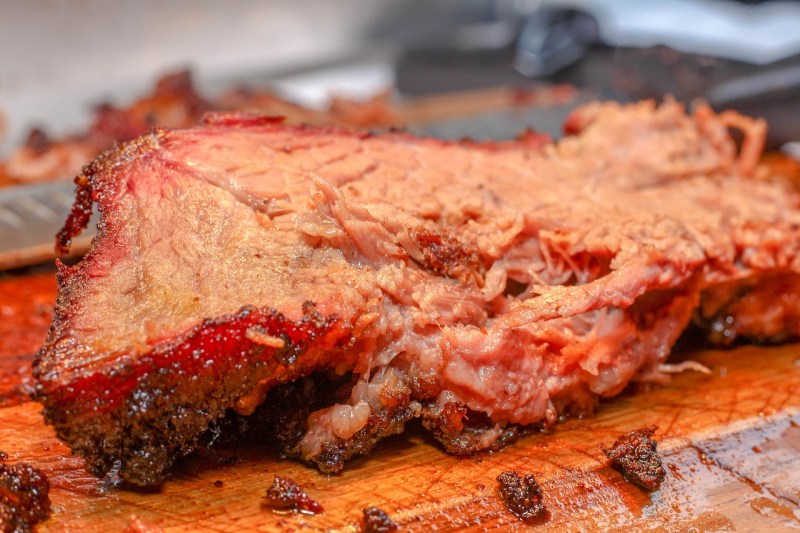
Nothing beats a homemade brisket. Between the crispy bark, the melt-in-your-mouth fat, and the general awesomeness of cooked meat, it ranks near the top of the best possible things to put in your mouth. To help you make your own, we’ve got a great recipe from our friends at Traeger Grills to share with you.
This coffee-rubbed brisket takes some of the best things in the world — coffee, beef, and fire — and puts them all in one place (technically two places — your grill, followed by your mouth). Like any good brisket, this one takes time to cook — 9 hours, in fact — so it’s best to set aside an entire day to prep and then sit by the barbecue with a beer or four, taking in the sweet, sweet smells that will be coming off the grill. (Need some beer choices? We recommended these beers to pass the time.)
“Make that bark dark. Beef has our coffee rub written all over it. This brisket is generously injected and seasoned with our new rub mixture for a richness in flavor that’s simply unmatched,” said the folks at Traeger.
For the purposes of this recipe, we used the Traeger Ironwood 885 grill. We also used hickory wood pellets to complete the rich, dark, and oh-so-irresistible flavor profile.

Slow-cooked brisket with Traeger coffee rub
(Prep time: 10 mins; cook time: 9 hours; serves: 8-12)
Ingredients:
- 1 (15 pounds) full packet of beef brisket
- 1/4 cup of Traeger Coffee Rub, divided
- 5 cups of water
- 4 tablespoons of salt
Method:
- Trim off the excess fat from the brisket, leaving a 1/4-inch cap on the bottom.
- Combine 2 tablespoons of coffee rub, 1 cup of water, and 2 tablespoons of salt in a small bowl, stirring until most of the salt is dissolved. Inject the brisket every square inch or so with the coffee rub mixture. Season the exterior of the brisket with the remaining rub and remaining salt.
- When you’re ready to cook, start the Traeger grill on “Smoke” with the lid open until the fire is established (4-5 minutes). Set the temperature to 250 degrees Fahrenheit and preheat, lid closed, for 10-15 minutes. (Note: hickory wood pellets are recommended for this recipe.)
- Place the brisket directly on the grill grate and cook for about 6 hours or until the internal temperature reaches 160 degrees Fahrenheit.
- Wrap the brisket in two layers of foil and pour in a 1/2 cup of water. Secure tin foil tightly to contain the liquid. Increase temperature to 275 degrees Fahrenheit and return to the grill. Cook an additional 3 hours or until the internal temperature reaches 204 degrees Fahrenheit.
- Remove the brisket from the grill. Let cool, then slice. Enjoy!

Brisket tips and tricks
- Coffee works so beautifully in a rub because of the flavor dance it does with the brisket. The meaty, smoky flavor of the brisket melding with the deep, earthy notes of coffee is the perfect balance.
- Trimming meat properly is always important, but especially so when smoking. Be sure to trim your brisket evenly so the smoke penetrates the meat evenly.
- Resting brisket is torturous, but an important step. Smoking is not a short process, and having to wait another half hour to an hour before cutting into that gorgeous piece of meat borders on cruel. But it’s vital that you let your meat rest after it’s cooked. As brisket cooks, the muscle fibers contract, and connective tissue breaks down. This causes the moisture in the meat to push outward. Resting after the cooking process allows this moisture to redistribute and settle back inside the meat where it belongs.



